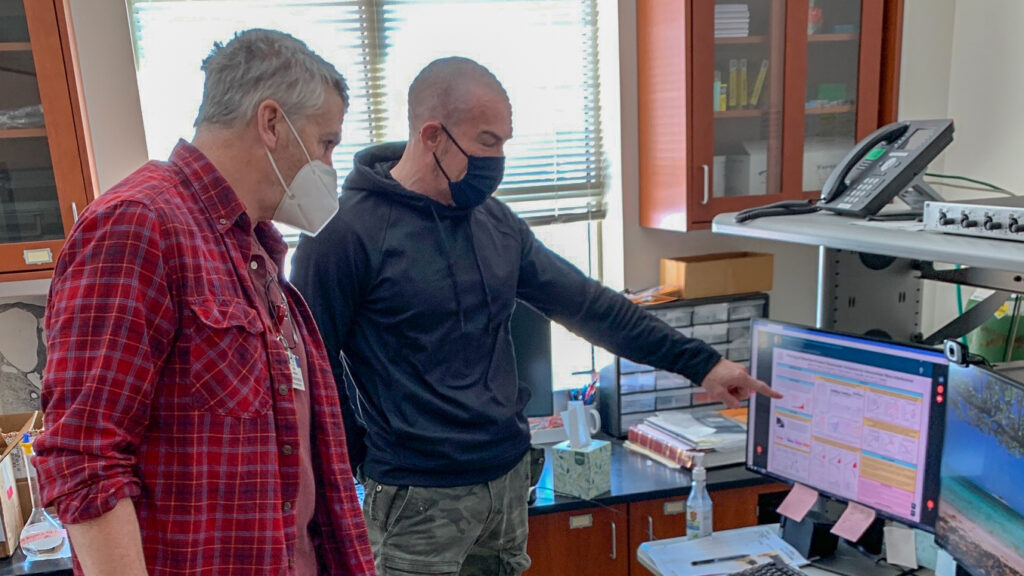The hearing science community is tackling the COVID-19 pandemic like everyone else – going virtual. But, that’s no easy task for the Midwinter Meeting of the Association for Research in Otolaryngology (ARO), which has attracted more than 1,200 attendees in recent years.
To allow greater participation in online activities, poster sessions will open almost two weeks before the start of the general meeting, scheduled for February 20-24. Oral presentations will be both live and pre-recorded to encourage attendance, and virtual chat rooms will ensure comments and questions can be addressed in an open forum. To learn more, visit the ARO Virtual Conference Hall Tour:
“One of the things we most look forward to is networking with other scientists,” said Jeff Lichtenhan, PhD, assistant professor of otolaryngology. “Networking will suffer this year, but on the bright side, we should have more time to experience some great posters and talks.”
Some things have not changed in spite of the virtual venue. Postdoctoral Research Associate Shannon Lefler, AuD, received a travel award for her poster submission. This year however, that award translates into a $50 lunch voucher to be used during the Travel Awardees virtual luncheon.
Several otolaryngology faculty hold leadership positions with ARO:
- Keiko Hirose, MD – Past President and co-chair of the nominating committee
- Mark Warchol, PhD – Council Member and co-chair of the awards committee
- Lavinia Sheets, PhD – Member of the external relations committee and moderator for a podium session on “Ototoxicity, noise damage and protection” for this year’s meeting.
A full list of presentations by otolaryngology researchers is listed below:
Larval Zebrafish Rheotaxis: Using a Model Species and Machine Learning to Understand How Sensory Hair Cells Mediate Natural Behavior
Kyle Newton, Lavinia Sheets
Influence of Mitochondrial Homeostasis on Mechanically-Induced Hair-Cell Damage and Synapse Loss in the Zebrafish Lateral Line
Melanie Holmgren, Lavinia Sheets
Noise Exposure Triggers Changes in Synaptic Function in Mammalian Hair Cells
Luis Boero, Shelby Payne, Maria Gomez-Casati, Mark Rutherford, Juan Goutman
Endolymphatic Hydrops Can Produce Shifts in the Cochlear Frequency-Place Map That Can Account for Diplacusis in Ménière’s Disease
Shannon Lefler, John Guinan, Craig Buchman, Shawn Goodman, Jeffery Lichtenhan
The Origin Along the Cochlea of Tone Pip-Evoked Otoacoustic Emissions
Shawn Goodman, Shannon Lefler, John Guinan, Jeffery Lichtenhan
Preclinical/Clinical Translational Evidence for a Potential Hearing Restoration Therapeutic, FX-322
Will McLean, Alec Salt, Thomas Lenarz, Susan King, Carl LeBel
Relationship of Immune and Non-Immune Cells to the Foreign Body Response in the Mouse Cochlea to Electrode Implantation
Muhammad Rahman, Douglas Bennion, Brian Mostaert, René Quevedo, Timon Higgins, Jonathon Kirk, Keiko Hirose, Marlan Hansen
Pou4f3 is Required for the Production of Type I – but Not Type II – Vestibular Hair Cells
Vikrant Borse, Mark Warchol
Programmed Cell Death Promotes Macrophage Recruitment Into the Developing Cochlea
Vikrant Borse, Tejbeer Kaur, Kevin Ohlemiller, Mark Warchol
Use of RNAseq to Identify Early Biomarkers of ARHL
Dominic Cosgrove, Jacob Madison, Daniel T. Meehan, Grady Phillips, Lauren Jacobs, Diana Jarocki, Michael Anne Gratton
Assessing Cochlear Trauma Using Electrocochleography During Simulated Cochlear Implantations in Gerbils
Douglas Fitzpatrick, Kanthaiah Koka, Craig Buchman, Oliver Adunka
